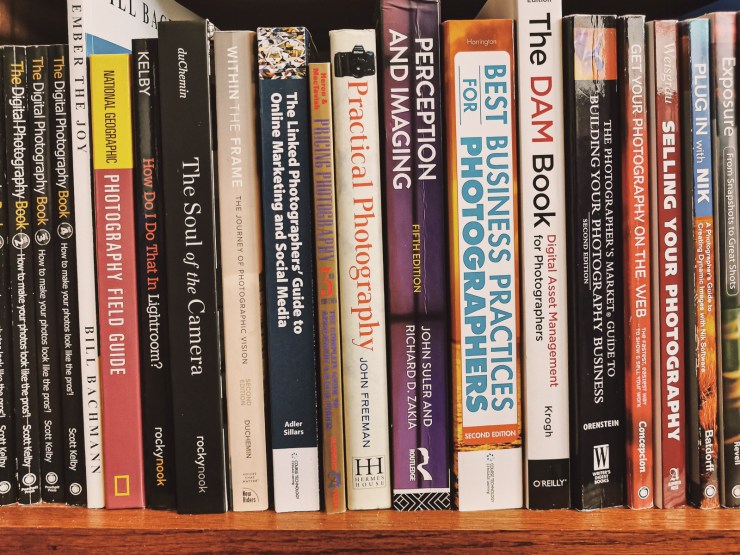Welcome to the world of photography, and congratulations on your first camera! Here are a few tips to help you get started.
I know the first thing many will tell you to do is to read the manual. Well, I’m not going to do that because I have to admit, I’ve never read mine.
Keep it around, use it as a reference to familiarize yourself with what all the buttons and screens are and to look up specific items when you have a question. There are sooooo many functions on cameras that you’ll likely not use them all. So I say, learn what you need to or want to, and look up the rest when it comes up.
First things first
- Charge your battery. As soon as you open up the box and take everything out, take the battery and charge it.
- Enter the date and time. This is one way to learn a bit about the menu on your camera. Look it up in the manual or online for your specific camera, then set the time and date.
- Set up other options. While you’re in that menu also look at how to create your copyright information and add in any other information you want to be saved with your EXIF data. Side note: Learn about EXIF data.
Learn the basics of photography
In my opinion, this is the first order of business. Learn about ISO, shutter speed and aperture, which help make up the exposure triangle. These are the basis for every image you’ll take.
There are plenty of books, online courses, videos, articles and blog posts filled with this information. Find what works for how you learn best.
Also take time to learn about composition. In my opinion, composition is the single most important thing that will help you create images that are not just snapshots.

Let the gear go for the moment
Master what you have before getting caught up in thinking you need to own the latest/greatest gear. Using what you have until you know what else you need and why you need it will save you some time and money.
After a while, you’ll realize what type of photography you want to do. If you want to work on portraits, weddings or event-type photography then you’ll want to look into what equipment you need for that. If you really want to try something out I would advise you to rent first, and buy later. Test out what you think you need before buying.
Learn by practicing
A lot. Take the camera with you everywhere. Head out into your backyard or neighborhood. There are many arguments for and against leaving your camera in Auto mode, but I believe that when you’re first learning how your camera works and what it’s capable of, shooting in Auto is a good way to see what it does.
Once you import images take a look at the ISO, shutter speed and f-stop. Using your camera in Auto to learn photography basics without having to worry about the technical side of it is a good way to really focus on your compositions, subject matter, what you include or exclude from a shot and to get used to just having the camera in your hands, over your shoulder and carrying it around.

Find a mentor, class or club to join
Whether online or in-person, you’ll find that hanging out with other photographers is a great way to learn about your camera and photography. For the most part, photographers are a friendly group and are almost always willing to help you learn.
Backup, backup, backup
Don’t forget to create a backup plan for your images. Please do not skip this. I am still amazed at how many of my photographer friends do not do this or are quite lax about it. Do not wait until you lose a whole year’s worth (or more) of images.
Check into cloud-based backups, external hard drives and/or RAID systems. You’ll thank me later.
Editing and post-processing
Try out different editing software. As with most everything photography related, there are tons of options out there. We all work differently and what works for someone else may not be right for you. Take advantage of free trial periods with the software and apps that are available.

Extra accessories to pick up right away
- Buy a second battery and charger.
- Get yourself a few extra memory cards and a cardholder to carry them in.
- Find a camera strap that is comfortable for you and doesn’t advertise to the world that you are carrying an expensive camera around.
Find photographers whose style you like and learn from them
Study their imagery, their use of color and light and practice emulating it with your own images. It’s a bit like reverse engineering something. Write down what it is about someone’s image that draws you in, what do you like, what don’t you like and then figure out how to do the same in your own images.
If you have questions about how someone created an image, ask them. More than likely they’ll happily help you out with the information.
Go easy on yourself
Remember, we all started somewhere. I realize it’s human nature to compare ourselves to others but instead of comparing your work to someone else’s, take a look at your first images.
Then, look at your current images. See your own growth and realize how much you’ve learned.
I mentioned it before, but the photographer community is almost always willing to help someone learn. Most importantly, have fun with it.
Tell your story with the second annual Visual Storytelling Conference!
Experience four days of interactive, online training sessions featuring a range of educational content with experienced photographers and content creators. This free event kicks off with a series of technical boot camps to build essential skills, followed by live, online sessions on photography, video, business and social media. Join live from March 10-13, 2022!
